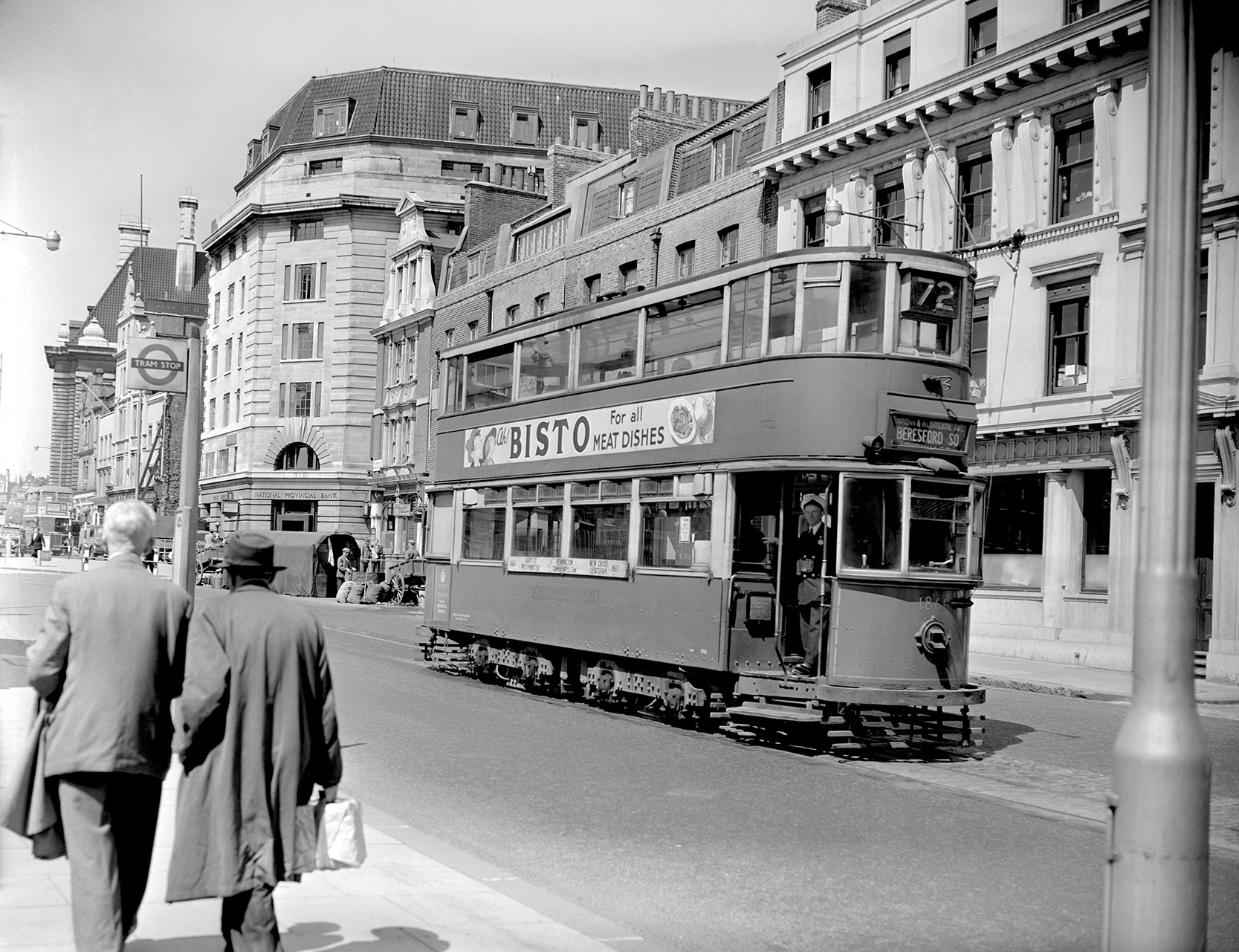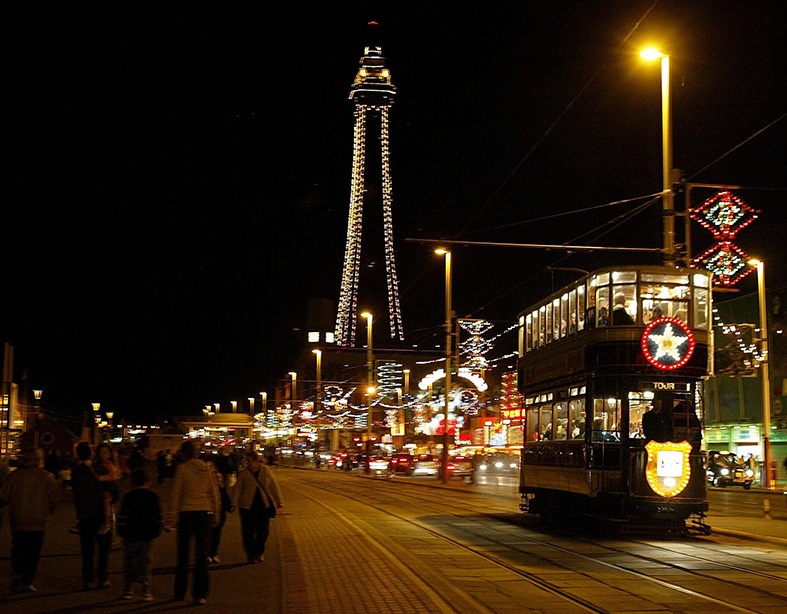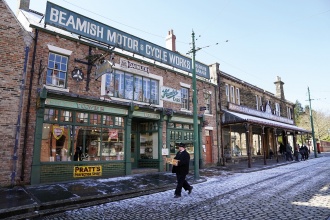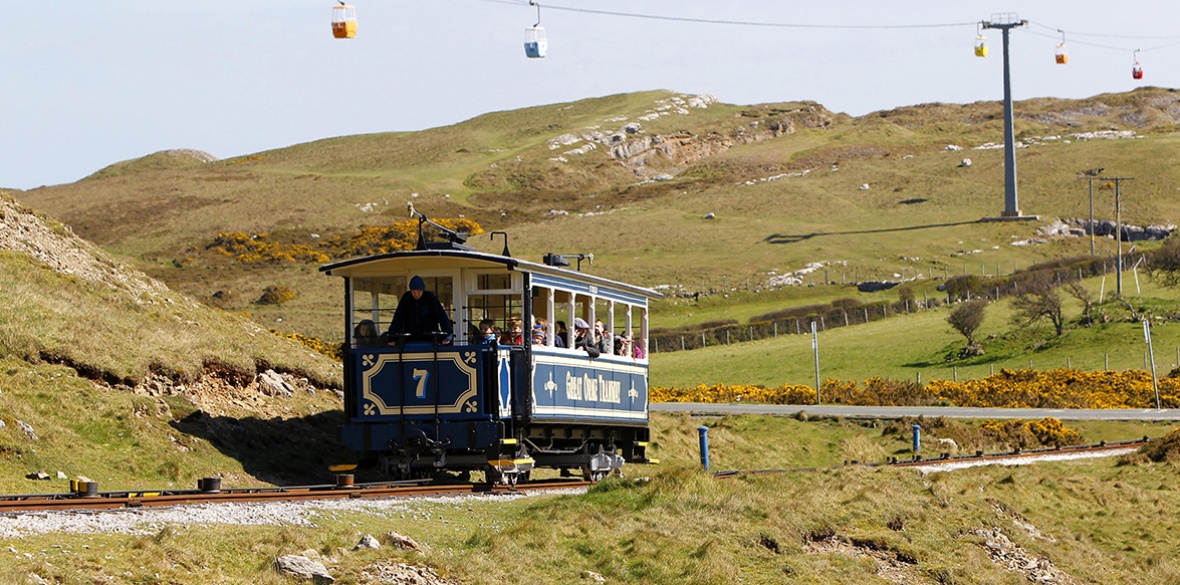This is the last article you can read this month
You can read more article this month
You can read more articles this month
Sorry your limit is up for this month
Reset on:
Please help support the Morning Star by subscribing here
ONE regular visit for my wife Ann and me is to Blackpool. This was the first British seaside town to build an electric tramway, in 1885, and has remained true to trams ever since.
Today you can choose to ride down the Golden Mile on a historic tram or one of the most modern and comfortable streamlined beauties. No, you don’t have to ask, Ann and I always choose to ride a historic rattler.
Another favourite holiday destination is north Wales, where no less than six narrow-gauge steam railways mean a packed week of idyllic travel with the smell of coal and steam in the air. But we are going to look for some other day-out destinations with transport themes.
In the days before car ownership was common the humble tramcars, buses and branch-line railways moved thousands of working people to and from their jobs. Public transport was cheap, popular and efficient.
At weekends public transport took hundreds of hikers and walkers out of the grimy industrial towns for a taste of the clean air of the countryside.
Today there are still places where you can ride on the magnificent antique and evocative rattlers that are the tramcars, buses and trains of days gone by.
Back in 1952 Ann’s dad took her to ride on what he believed would be London’s last tram. Ann was just six but she can remember it still — the excitement, the crowds and the lights of her evening ride. Those trams had been important to Londoners.

The trams took dad and mum to work or to the shops, or at weekends took them both to London’s countryside. Perhaps they would head for Hampton Court or Hampstead Heath.
In 1952 the London trams were withdrawn, to be replaced by electric trolley buses and eventually the all conquering diesel bus replaced green environmentally sustainable public transport with profit for the oil industry.
Londoners like Ann’s dad, if they were alive today, would be surprised to see electric trams back on the streets of parts of London and other British cities.
When in the 1960s Dr Richard Beeching destroyed the smaller branch railways in the search for profits before service, we thought they were gone forever, yet today there are hundreds of preserved railways delighting new generations with rides on a real steam train.
Ann and I loved those old trams and buses and the steam trains that took us on our holidays. They gave us both a thirst for the adventure of holiday travel and we still have that thrill today.
Today wherever and whenever we can we seek out a museum or a preserved railway where we can still catch a steam train, an old bus or, best of all, a tram — they really are transports of delight. Here are some of our favourites.
Blackpool’s trams, Lancashire
Blackpool is where it all started. The first tramway in Britain opened along the Promenade here in 1885, and was the first electric tramway in the country, indeed one of the very first in the world.

Amazingly the first is also the last — the line is now the only remaining “traditional” tramway in Britain. It has run almost continuously for 120 years.
Snowdon Mountain Railway, north Wales
One of the most unusual railways in Britain climbs up the highest mountain in Wales. Puffing steam engines climb the 3,560 feet to the summit of Snowdon.

The track is so steep that a normal train would slip and slide on the rails, particularly in snowy and icy weather. The Snowdon Mountain Railway uses a technique developed in on Swiss mountain railways.
A gear wheel on the locomotive engages with a toothed rack between the rails of the track. The railway dates back to 1896 when the first steam engines arrived from Switzerland.
Tramway Village, Crich, Derbyshire

When you enter the museum at Crich they hand you an old copper penny. No it isn’t anything to do with primitive toilet arrangements here. You use the penny to buy your ticket on you first tram — a ticket that lets you ride all the trams all day.
Trams run to and fro every few minutes as visitors ride over the cobbles of the period street. Then the trams head up the valley to views over the Derbyshire countryside that will take your breath away.
Llandudno’s cable cars, Great Orme, north Wales
San Francisco is famous for its cable cars but you don’t need to go to America’s west coast to experience this unique type of transport.
From a pretty little Edwardian station in the popular seaside resort of Llandudno on the north Wales coast, smart cable cars take visitors up the steep 679-foot (207m) climb to the summit of the Great Orme, a rugged peninsula that pokes out into the sea.
Seaton Tramway, Devon
Seaton Tramway operates narrow gauge trams between Seaton, and Colyton in East Devon’s glorious Axe Valley. Travelling alongside the River Axe estuary through two nature reserves, the open-top trams give an unrivalled viewing of the abundant bird life.
Trolley buses and trams, Carlton Colville, Suffolk
The museum at Carlton Colville is the only place in the British Isles where you can ride on all principal forms of public road transport from the earlier part of the 20th century.
Trams and trolleybuses are the stars of the show but you will also find old buses, cars, vans, lorries and even steam-rollers.
Ffestiniog Railway, Porthmadoc, north Wales
The Ffestiniog railway runs through beautiful countryside along the coast at Porthmadoc and climbs 700 feet over the 13-mile route to the slate quarries of Blaenau Ffestiniog.
Along the way there are loops and tunnels and spectacular views. The two-foot-gauge trains have an amazing collection of steam locomotives and carriages, some dating back to the early days of the railway in the 1830s.
Here are a few other places to ride trams and trolley buses.
The biggest collection of trolleybuses is at Sandtoft, near Doncaster, in Yorkshire. Founded on its present site in 1969 to house, restore and run trolleybuses when they were fast disappearing from Britain’s streets, the Trolleybus Museum at Sandtoft has grown from a handful of vehicles and now has over 50 — the largest collection of preserved trolleybuses in the world.
Douglas in the Isle of Man still has horse trams — historic trams run from the Woodside ferry terminal at Birkenhead to the nearby transport museum.

There are steam trains, trams and horse-drawn charabancs at the Beamish Open Air Museum, Co Durham. And the Black Country Open Air Museum at Dudley has trams and an amazing underground boat trip.
You can add to this list vintage steam paddle-steamers like the Waverley and the Kingswear Castle. Brown-sailed Thames sailing barges still offer a chance to sail these traders from east coast ports.
On the Norfolk and Suffolk Broads you can still take a trip under sail on the black-sailed wherry, the Albion, a 124-year-old traditional Norfolk sailing craft.
She is one of only two remaining commercial wherries built specifically for the Broads. At their peak there were over 300 of these craft, but now Albion is one of very few still sailing or available for hire.
This is by no means a comprehensive list of the wonderful examples of vintage public transport still giving us access to much of our countryside in the style our ancestors enjoyed over the years.
Get out there and find a few of your very own personal favourite transport of delight.











